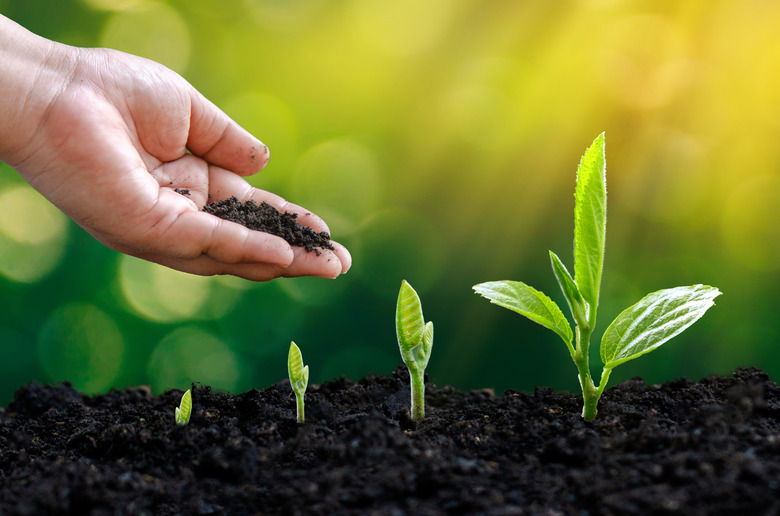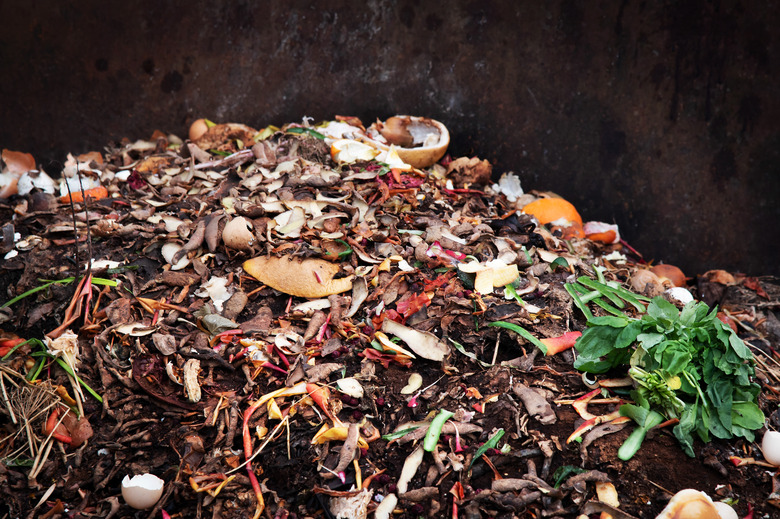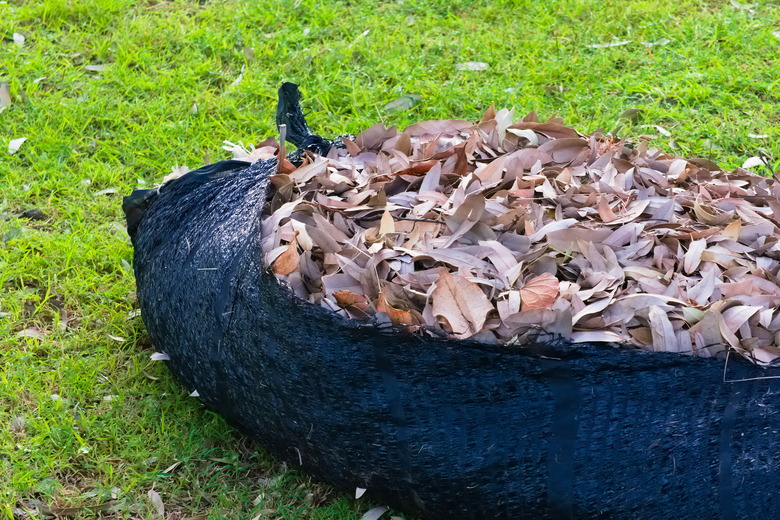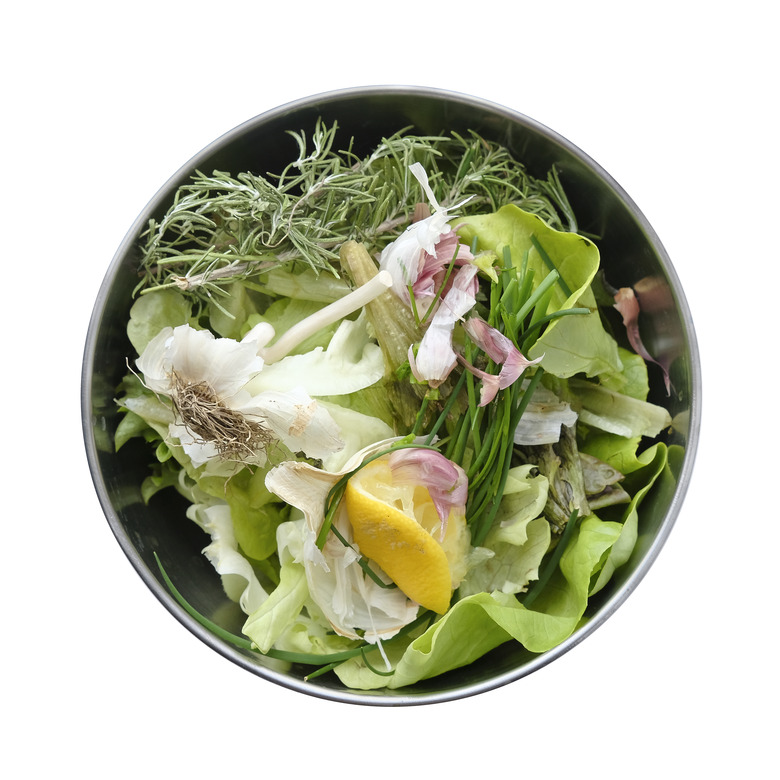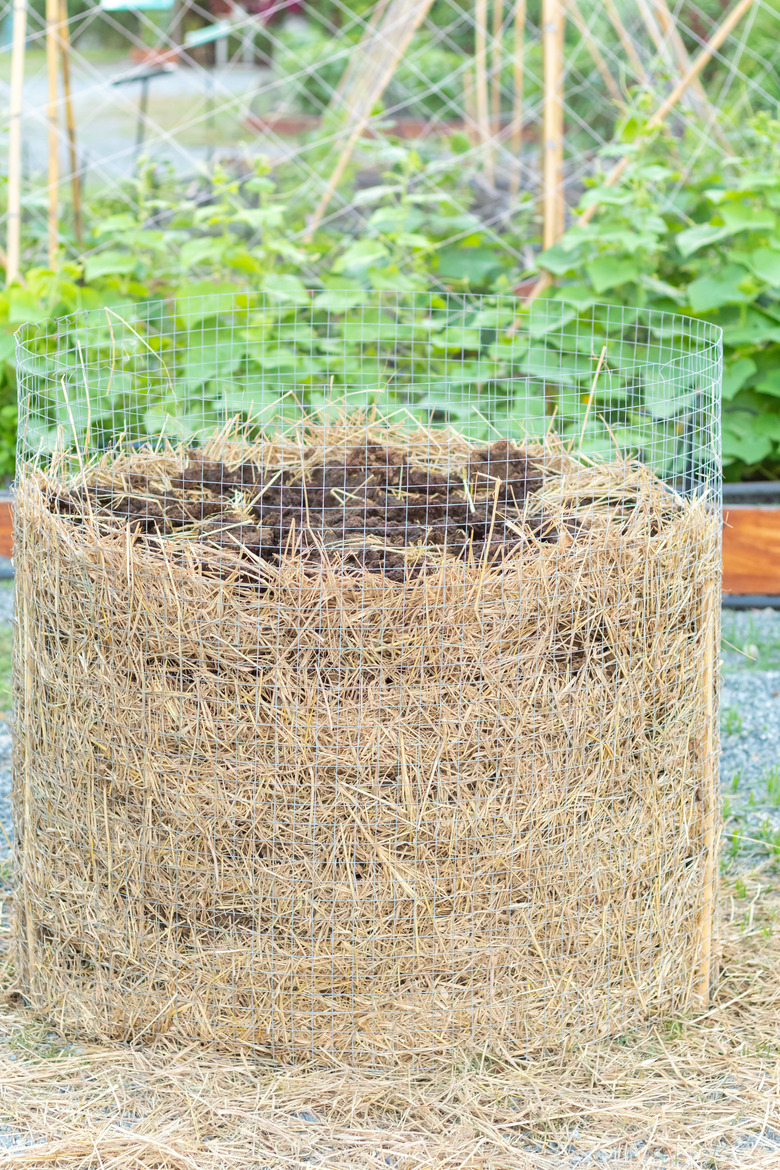How To Compost
Adding compost is one of the best ways to boost a garden's ability to thrive without the use harmful chemicals. This rich, homemade soil amendment adds all sorts of beneficial nutrients to garden soil while cutting back on items that may otherwise end up in the trash. The key to successful composting is balancing the "green" and "brown" matter added to the compost bin. Together, these components create a heat-based reaction that breaks organic matter down relatively quickly, turning it into a beneficial nutrient-rich material.
The Science Behind Composting
The Science Behind Composting
Effective composting isn't justa matter allowing piles of dead organic matter breaking down on their own; it's a scientific process that occurs when carbon-rich materials, nitrogen-rich items, moisture and air work together to break things down faster than they would on their own. Carbon-rich, or "brown" matter, includes items such as tree bark, leaves, twigs and paper. Nitrogen-rich "green" matter includes grass clippings and most produce-based substances such as apple cores and peels. Layering two parts brown matter with one part green matter, as well as adding just enough moisture to dampen the pile, helps the composting process occur.
Microorganisms such as bacteria, already present in the decaying matter, work together to break the pile down. As they do so, the pile heats up, killing off pathogens and seeds from weeds while speeding up the composting process. Aerating the pile by turning it with a pitchfork or shovel helps create pockets of air in the pile, necessary for the decomposition process. A well-balanced compost pile produces usable compost in several weeks to several months, depending upon the size of the heap.
"Brown" Matter You Can Compost
"Brown" Matter You Can Compost
Besides tree branches, bark and paper, brown matter you can compost may include other carbon-rich, plant-based materials such as pine needles, sawdust or untreated wood shavings from a woodworking project, corncobs and stalks from corn and other plants. Dried leaves also fall into the carbon category when it comes to composting, so save those leaves rather than setting them out for curbside pickup. Straw, shredded paper and chunks of plain corrugated cardboard are also excellent brown-matter add-ins for your compost pile or bin.
- Note: Break large items such as tree limbs and corn stalks down into smaller pieces to speed up the composting process. Any pieces wider than 1/4-inch in diameter should be chipped or sliced open to speed up the process.
Great "Green" Matter You Can Compost
Great "Green" Matter You Can Compost
While fallen, dead branches count as brown matter, fresh garden clippings, such as pieces from pruned shrubs, are green matter. Old frozen fruits and vegetables past their prime are also green matter that is fine to compost. Even pet hair salvaged off the grooming brush adds nitrogen to the compost pile. Coffee grounds are also rich in nitrogen, so save your coffee filters full of grounds for the compost heap. The paper filter counts as brown matter, completely welcome in the pile.
Even a few weeds pulled from the yard could be composted, with caution. A compost pile that heats up as it should will kill any weed seeds present. However, if a pile is just thrown together and not turned or maintained, those weed seeds can sprout and spread more weeds in your yard.
What Not to Compost
What Not to Compost
A few types of materials should never go in the compost pile because they may hinder the composting process or attract vermin. Breads, pasta, dairy and meat products, bones, animal waste, and kitchen grease or oils should not be added to a compost bin. This includes any kind of nut butter. While animal waste technically can benefit the soil as it breaks down, it may also contain parasites and pathogens that aren't killed off by the composting process. Eggs also shouldn't be added to the pile, as they may attract vermin, but rinsed eggshells do add nutrients to the compost as they break down.
Plants that are diseased or infested with insects should also not go into the compost pile. Invasive plant species should also not go into the compost pile, in case they go to seed and spread.
Also avoid putting any materials treated with potentially harmful chemicals into the compost pile, as these may either kill the microbes that help break matter down or they may introduce harmful chemicals to the compost and to the areas where compost is spread. Such items to avoid include plant matter treated with chemical pesticides, as well as treated or painted lumber, sawdust and wood shavings. Newer compostable plastics made from materials such as corn may break down in a home compost pile. Try these sparingly at first to ensure they break down in a reasonable amount of time.
Starting A Compost Pile or Bin
Starting A Compost Pile or Bin
Get started by selecting a shaded area that's easily accessible, since you'll add materials and water to it from time time. A free-standing heap works well, but feel free to create a container for your compost area out of untreated lumber or even hardware cloth. Hardware cloth along the bottom also prevents burrowing creatures from getting into the compost.
- The ideal compost pile size is approximately three feet wide, long and high, as it takes longer for material to break down if the pile is much larger or smaller than this. This cubic yard of matter heats up faster than piles of other sizes.
Begin by layering damp brown matter with green materials, using either equal portions or two parts brown to one part green—a two to one ratio is ideal. The brown matter should be wet first, like a slightly damp sponge. Always cover the green matter with 5 inches or more of brown to help keep insects and vermin away. A layer of existing compost or garden soil added atop the pile helps the composting process get started.
Wait about two weeks before turning the materials with a pitchfork or shovel, then turn the pile every two to four weeks. This helps aerate the pile, providing oxygen for the microbes that break things down. Sprinkle the pile with water if it feels too dry, or whenever you add dry brown matter. Feel free to add more material whenever you like, doing your best to keep the ratios of brown to green at no greater than three to one. A tarp over the top of the pile isn't required, but it helps keep the moisture in.
If you feel a compost pile or homemade bin is too messy or difficult to deal with, consider a pre-made composting bin such as the barrel-shaped style designed to either roll or turn on a spindle. If using this type, read the manual that came with it for specifics, as some are more elaborate than others.
Whether using homemade or store-bought compost containers, the compost is ready when the materials at the bottom (or throughout) the pile look like dark, rich earth. Expect it to take several months before the compost in a pile three feet tall is ready. The compost shoudn't stink; if your pile smells like rotting materials, reassess what you're adding to the pile. Smelly compost piles may also have too much water in them; covering them with a tarp during rainy periods may help.
Uses for Compost
Uses for Compost
Compost is considered gold in the garden, and it has several uses:
- Add fresh compost around garden plants in layers up to 3inches deep as a mulch. Used as a mulch, compost not only provides an ongoing source of nutrients, but it also helps moderate soil temperatures and moisture levels.
- Mix compost into the soil before planting. Compost has two main benefits as a soil amendment: It helps the texture of soil, improving the friability of dense soils; and it improves the moisture-retending ability of soil, especially if it is too sandy.
- Compost can be an excellent component for making your own potting soil. Mix good, well-decayed compost with equal parts peat moss and vermiculite or perlite. Or blend in an equal part of compost with commercial potting soil. The result will be a fine potting soil that will allow plants in containers to thrive.
